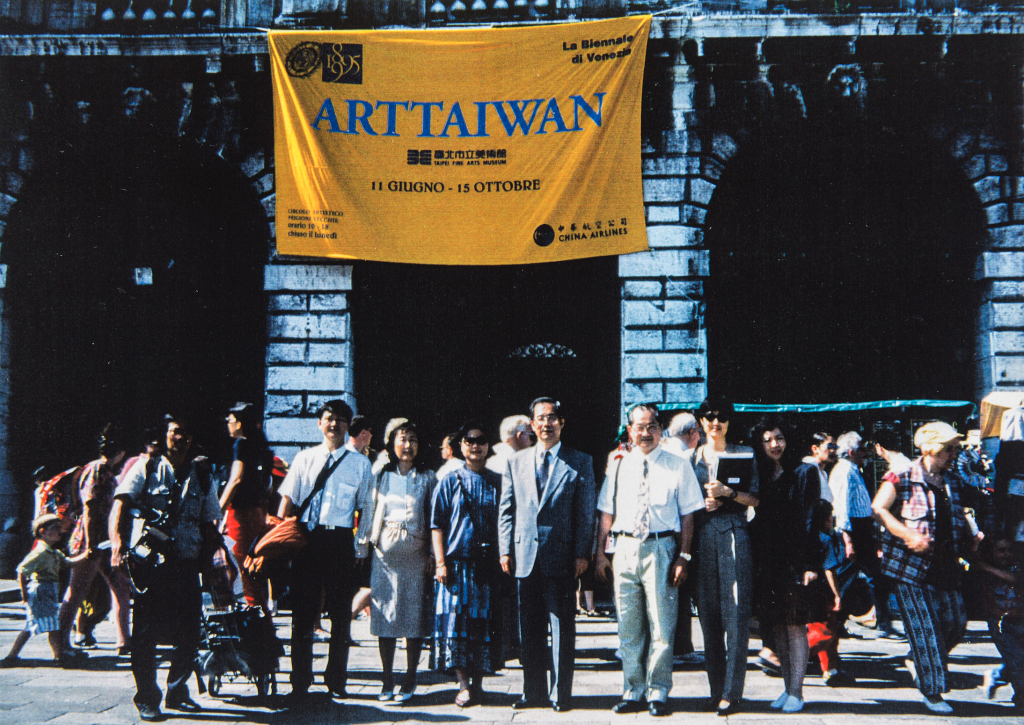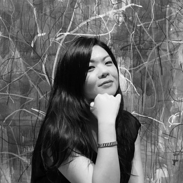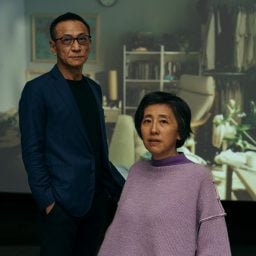The toast to the opening of the Taiwan exhibition at the 2022 Venice Biennale almost never took place. The show was very close to being canceled after its organizers were forced to ditch their original plans just two weeks before the deadline for submitting their proposal. Yet there they were with dozens of supporters, raising glasses at Palazzo delle Prigioni in San Marco.
“Because of Taiwan’s situation, the Venice Biennale is a very important platform for us. If we don’t come, we would lose the chance of having a dialogue with international communities,” Jun-Jieh Wang, the director of the Taipei Fine Arts Museum, which organized the show, told Artnet News. “We cannot give up.”
The exhibition is a last-minute archival show titled “Impossible Dreams” that traces the history of Taiwan’s appearances in Venice since 1995, first as a national pavilion before being demoted to a collateral event, and from group shows to solo presentations.
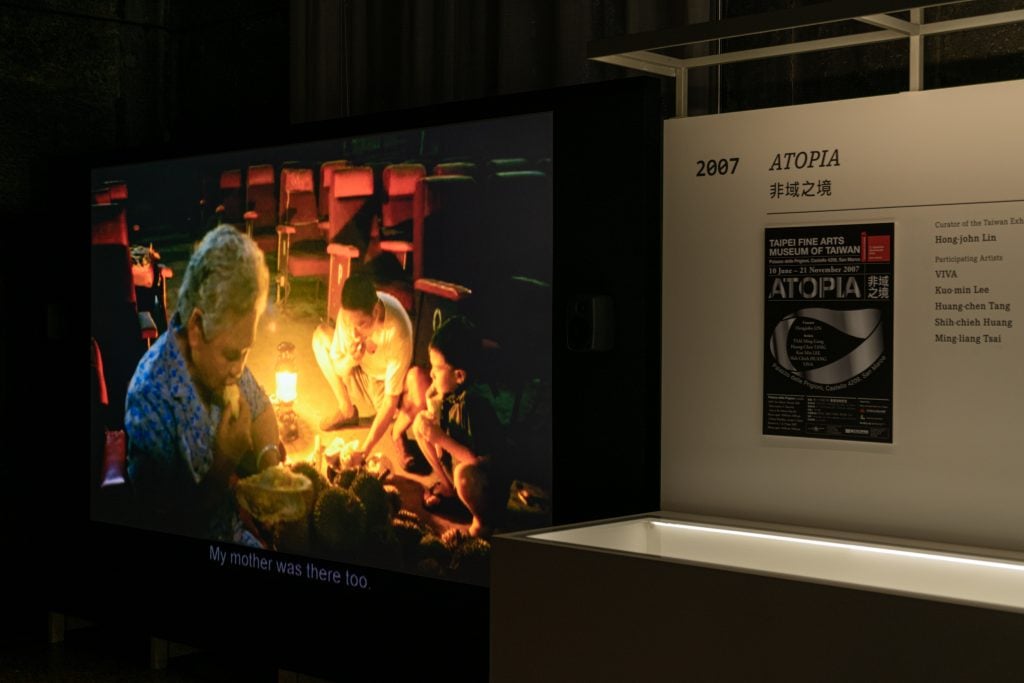
Installation view of ‘Impossible Dreams,’ Taiwan’s Collateral Event at Venice Biennale. Courtesy of Taipei Fine Arts Museum.
The problems began last December when a series of sexual assault allegations against Sakuliu Pavavaljung, the artist who was originally selected to represent the self-governed island in the exhibition, emerged online. The 61-year-old award-winning Indigenous artist would’ve fit the theme of this year’s Venice Biennale. But the scandal escalated quickly, with over 1,000 art workers condemning the artist and asking for his show to be canceled. The Taipei Fine Arts Museum had to decide quickly; district prosecutors had already begun an investigation.
“It was a very tough situation. But this is a very sensitive topic, and it has gone beyond a moral question as it involves a criminal investigation,” Wang said. “We decided to end the partnership in mid-December. We can’t possibly find another artist within such a short period of time after spending nearly two years working with [Pavavaljung].”
Even if there was enough time, the chances of having another artist agree were highly unlikely, as no one wanted to be the filler artist after the explosion of such a serious scandal, Wang said.
The team quickly came up with the archival exhibition.
“The archive is readily available. It’s easy to put together and set up, in terms of transport and logistics,” Patrick Flores, who was originally hired as the curator for Pavavaljung’s show, said.
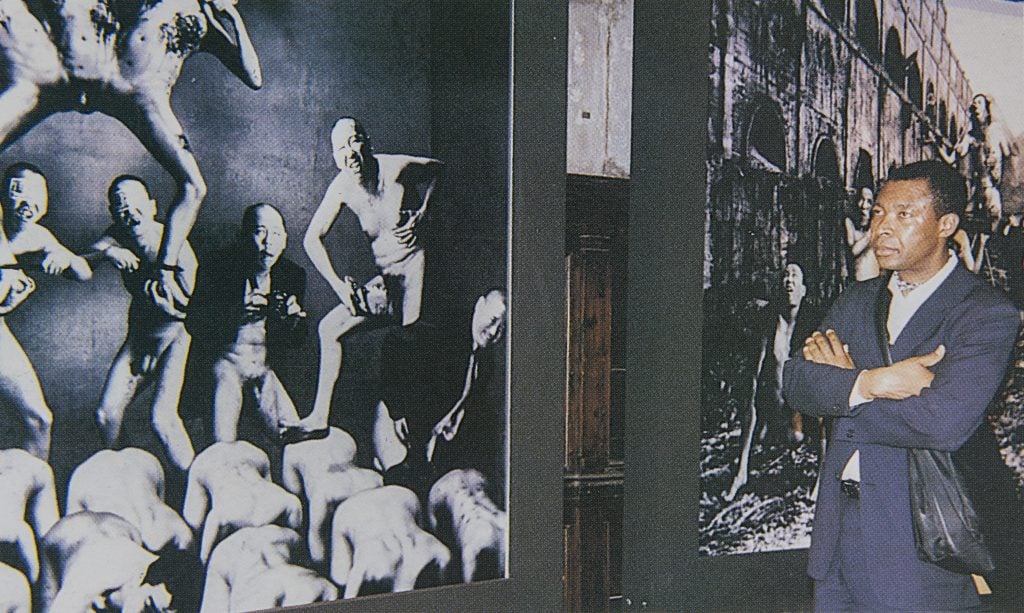
Curator Okwui Enwezor at the Taiwan exhibition at the 48th Venice Biennale in 1999. Courtesy of Taipei Fine Arts Museum.
The Politics of Venice Biennale
As the war in Ukraine haunts this year’s Venice Biennale, Taiwan faces its own imminent military threats from China, a close ally of Russia’s that has been deploying fighter jets into Taiwanese airspace. The existence of Taiwan, self-governed since the Kuomintang political party fled the mainland after losing its war against the Chinese Communist Party, has long been a point of political contention. China, which claims Taiwan as a province, has escalated it saber-rattling recent months, leading some to see parallels with Russia and Ukraine.
“Of course, there is an ongoing war that involves one country invading another, and then naturally, people from outside of Taiwan would ask: what about the relationship between China and Taiwan? Is it very similar?” Wang said.
The answers to such questions are complicated, even within Taiwan, the museum director said.
While on the one hand, there are concerns about whether China will invade Taiwan, there are also pro-Beijing voices within the island that favor maintaining close ties with China.
“We hope to foster a dialogue with the international communities through art,” he said. “There shouldn’t be just one voice, one perspective.”
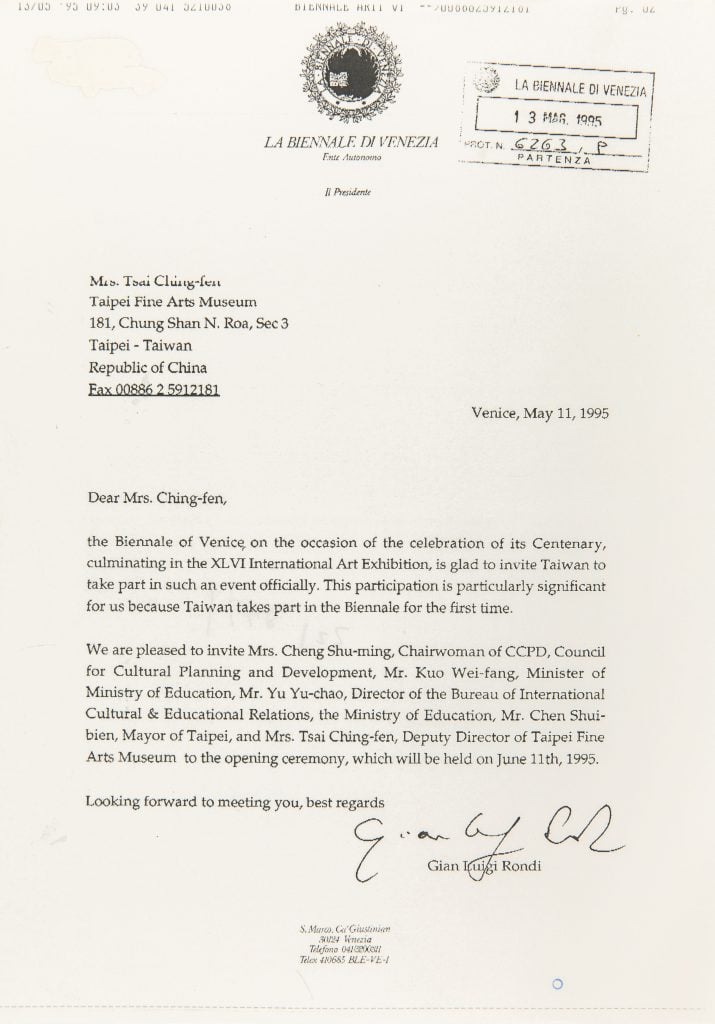
Letter from La Biennale di Venezia inviting Taiwan to participate in the 46th Venice Biennale in 1995. Courtesy of Taipei Fine Arts Museum.
One of the highlights of “Impossible Dreams” is a 1995 letter from Gian Luigi Rondi of the Venice Biennale to curator Tsai Ching-fen inviting Taiwan to take part in the biennale for its centenary. The event was a milestone, marking Taiwan’s entrance onto the world stage less than a decade after it lifted its three-decade martial law order in 1987.
The following years saw Taiwan presenting group exhibitions as its national pavilion. Things changed in 2003 when Taiwan was stripped of its pavilion status after successful protests from China (which secured its own national pavilion slot but had to cancel after the Sars epidemic). Taiwan then got bumped to a collateral event, but organizers never gave up, even taking on a long-term lease at a former prison in San Marco.
Thus, even as a collateral event, Taiwan has a role to play. “Collateral is a symptom of a lack, addressing a gap that needs to be filled,” Flores said.
